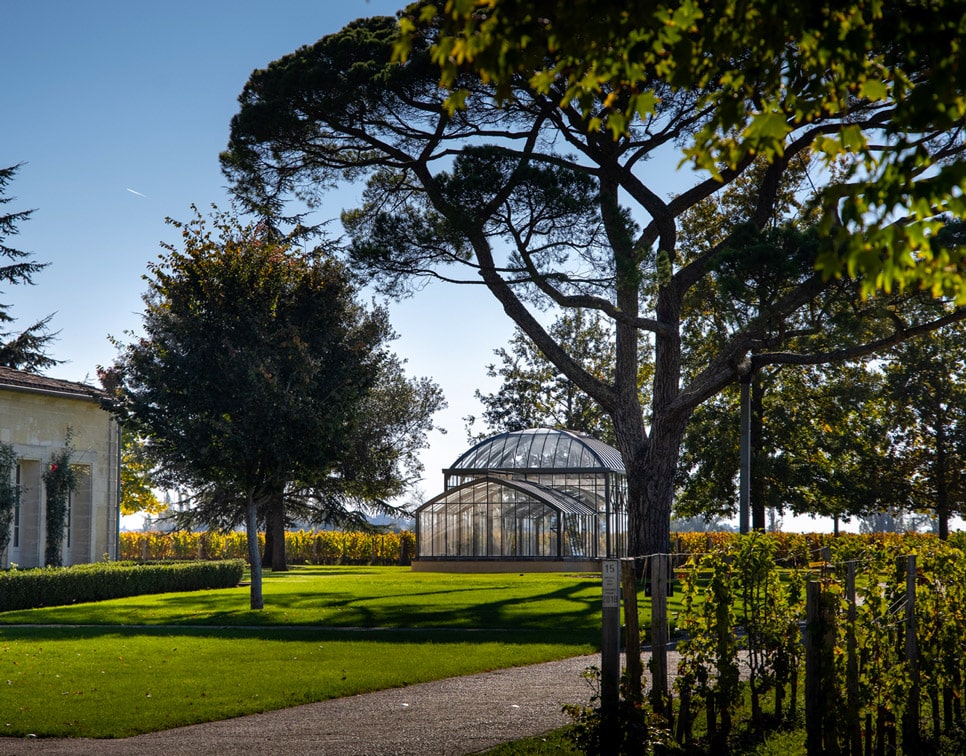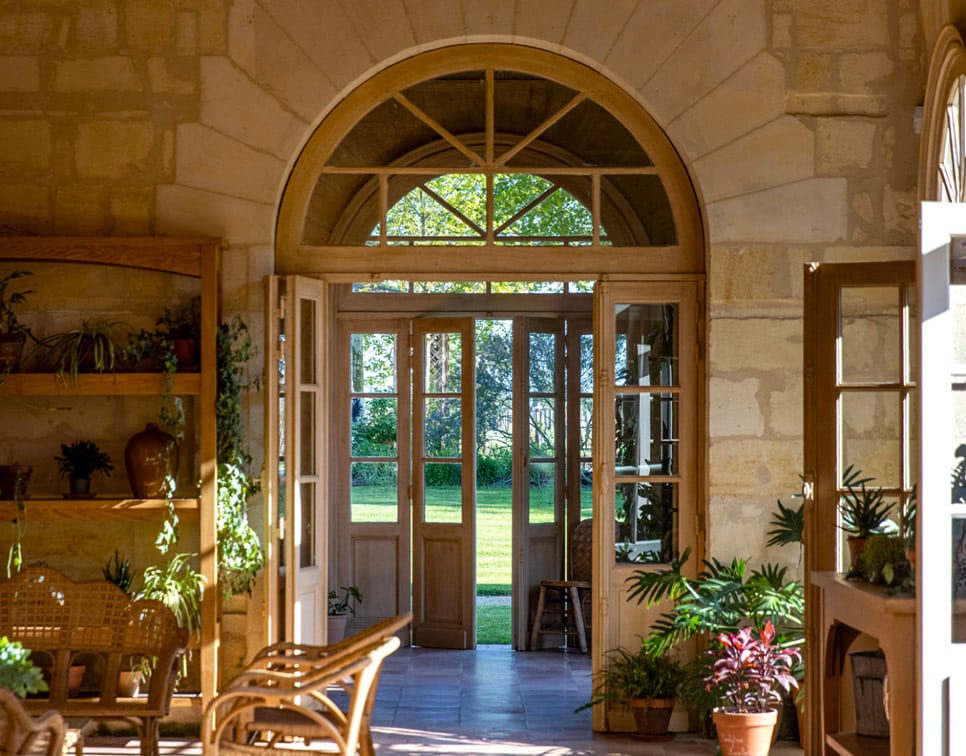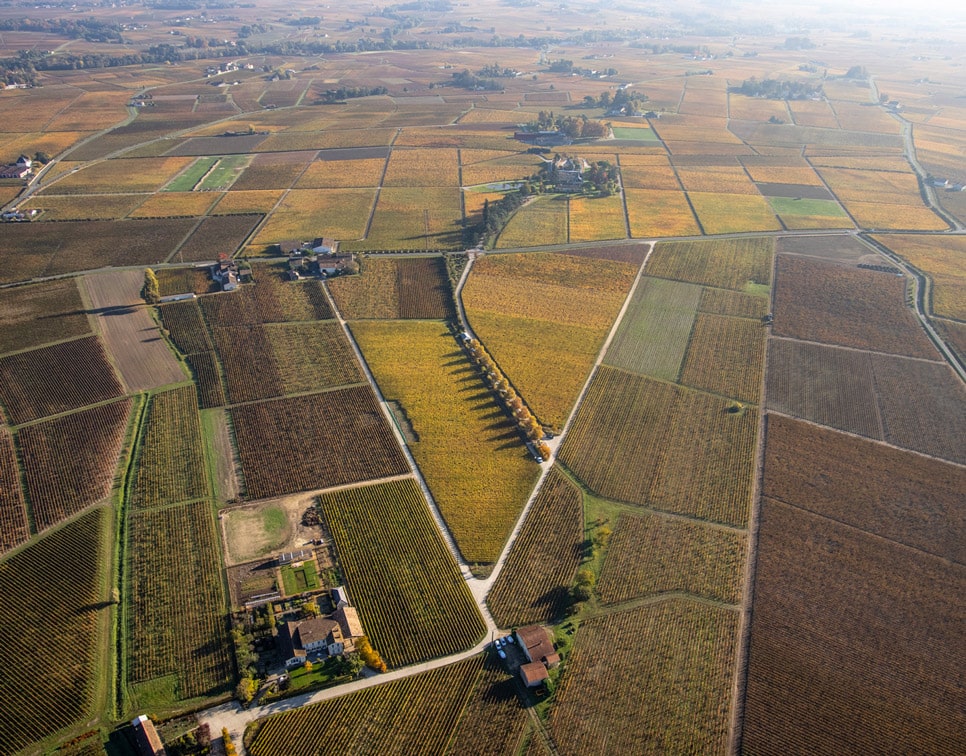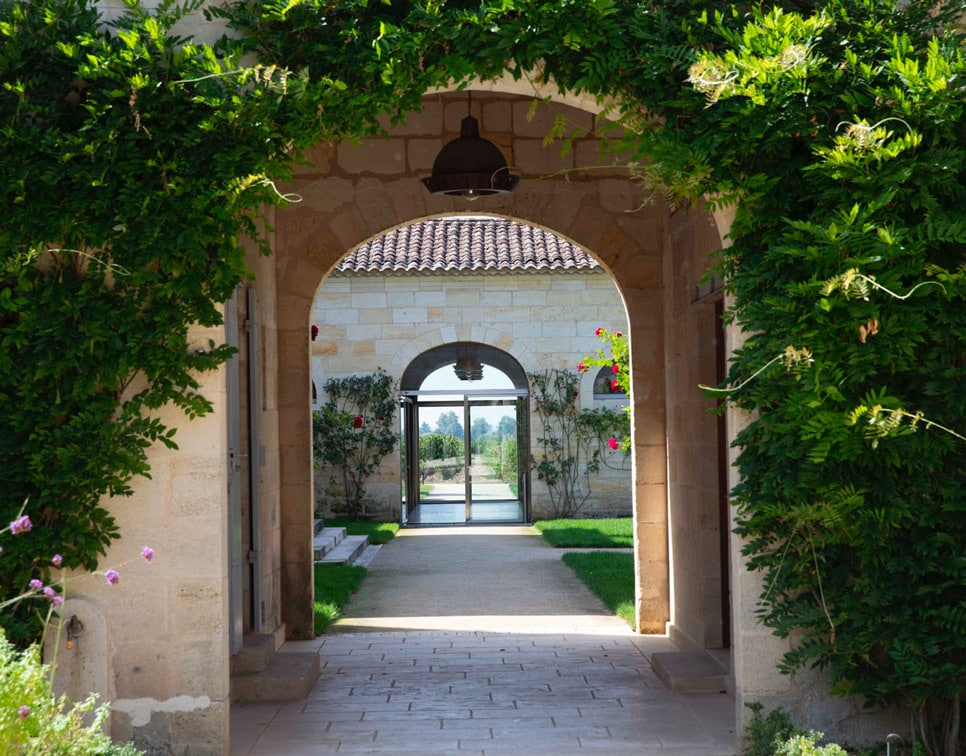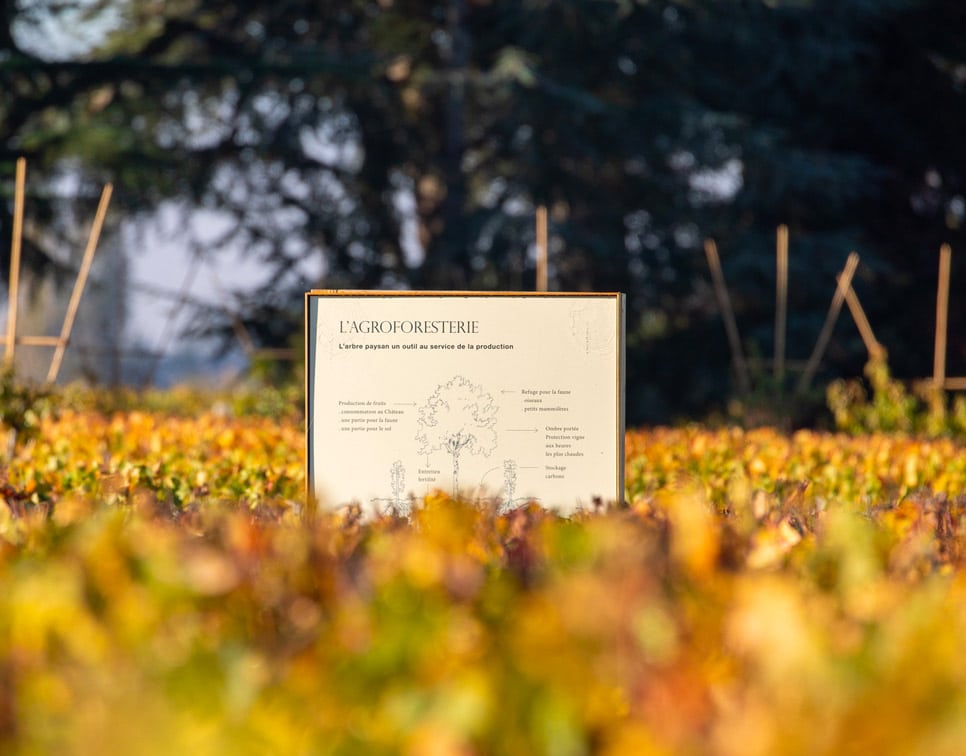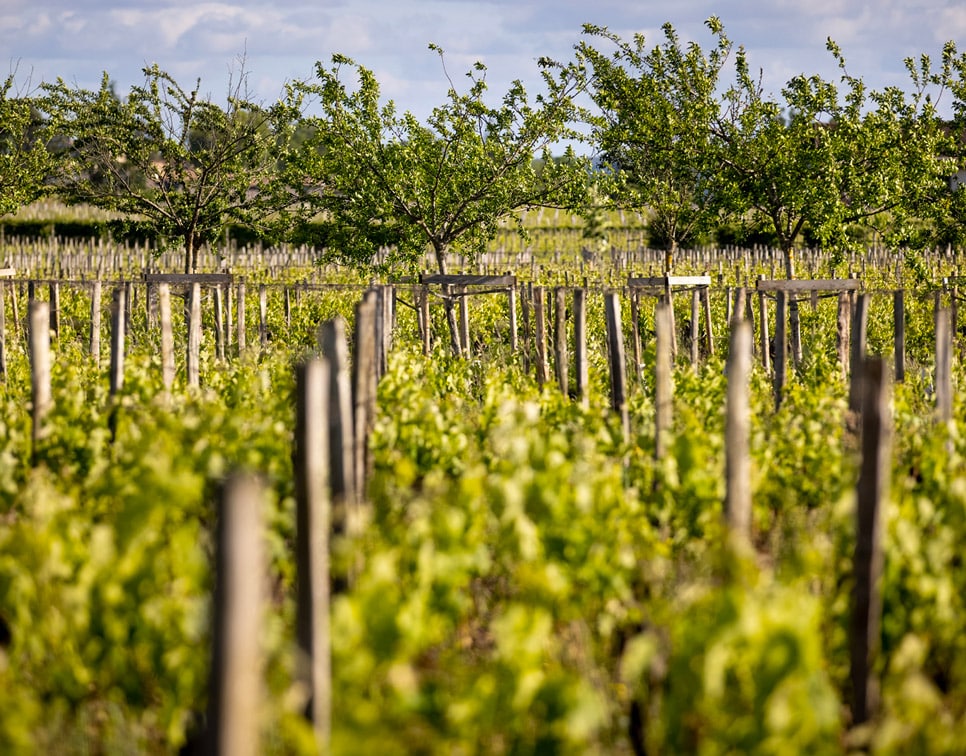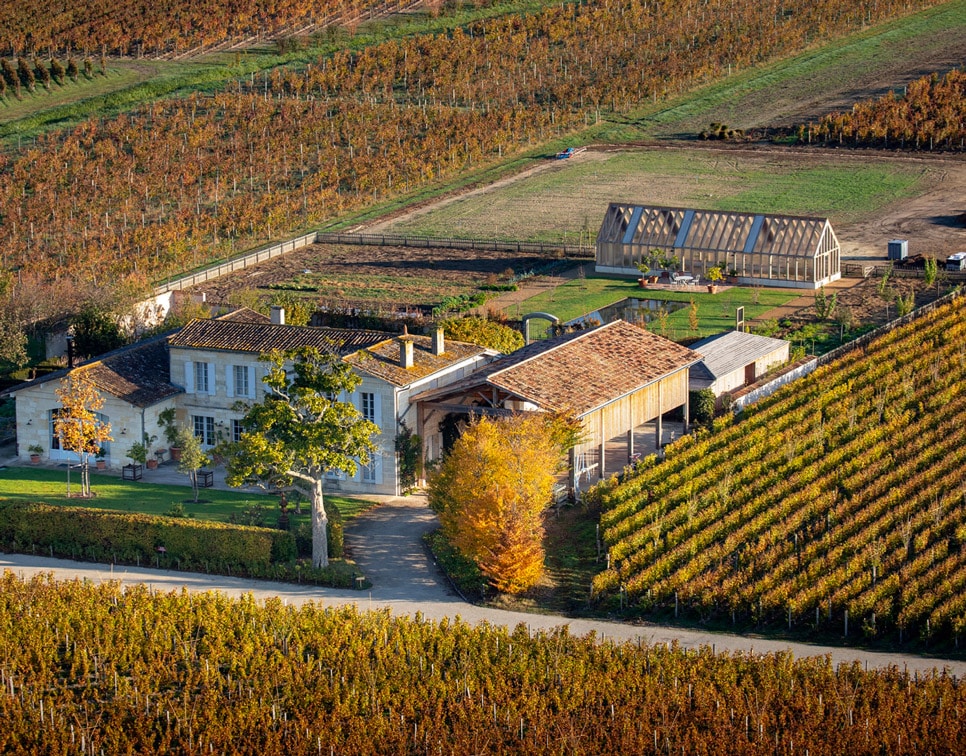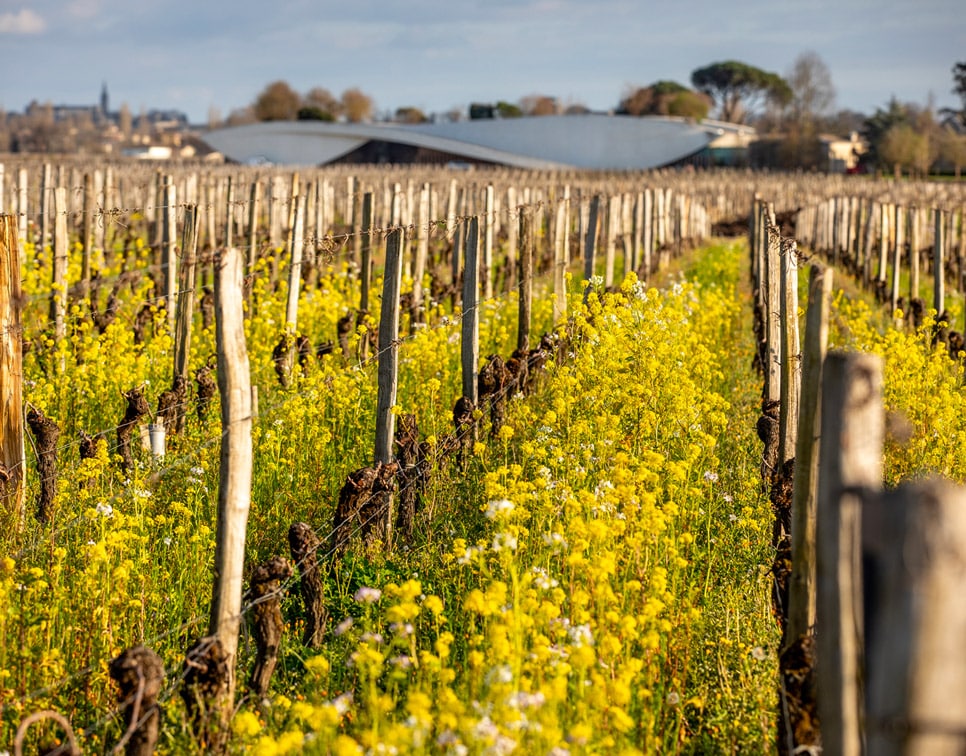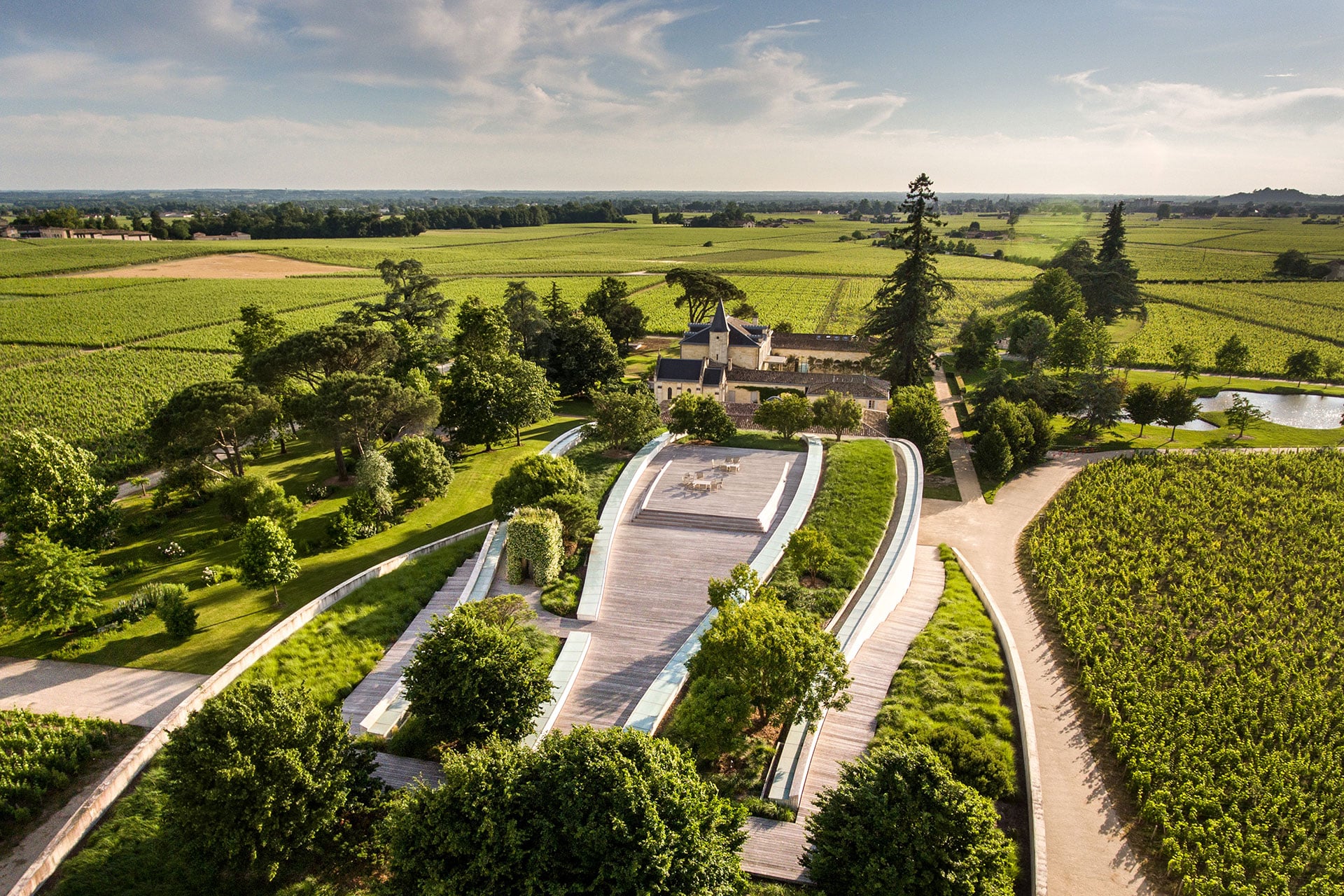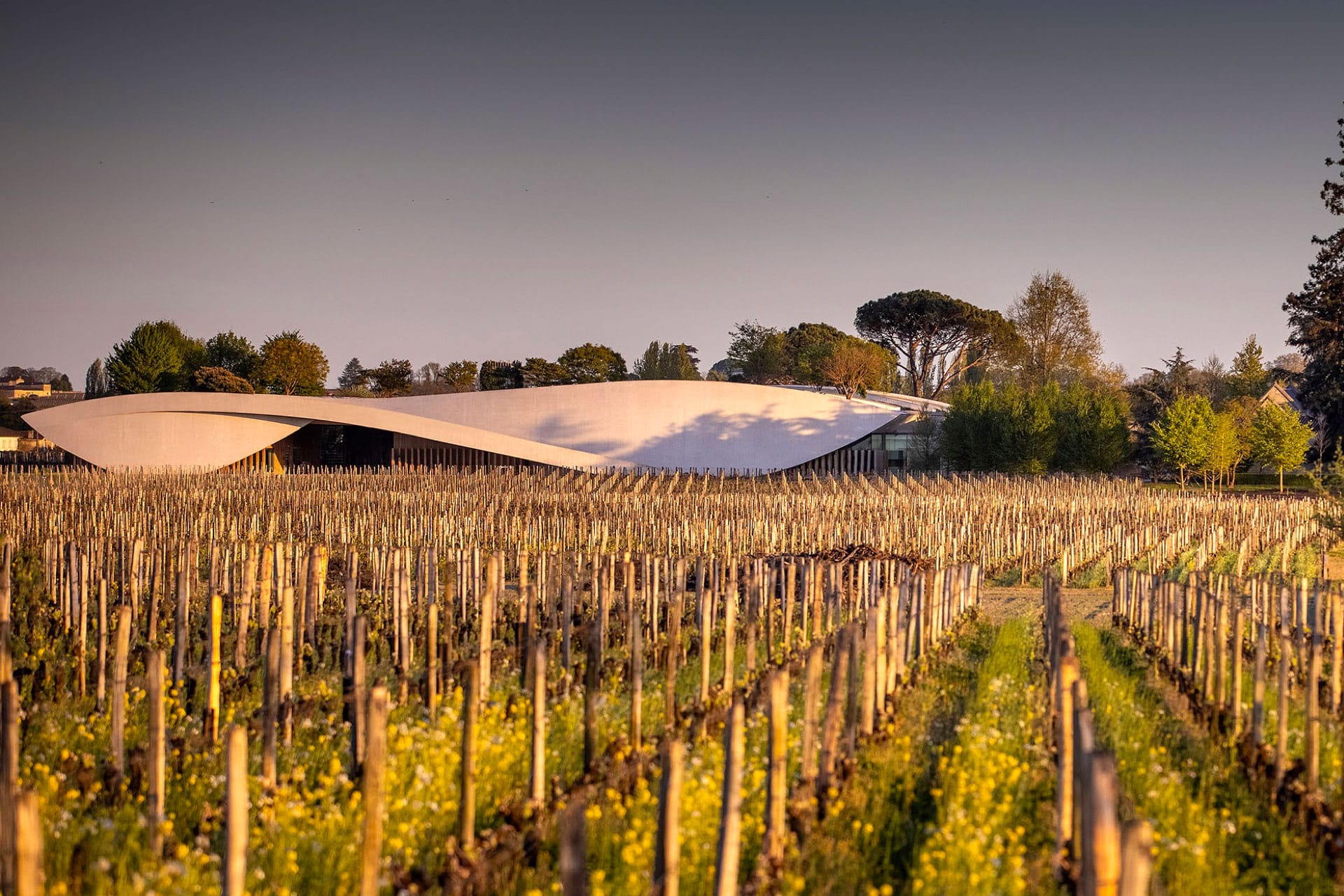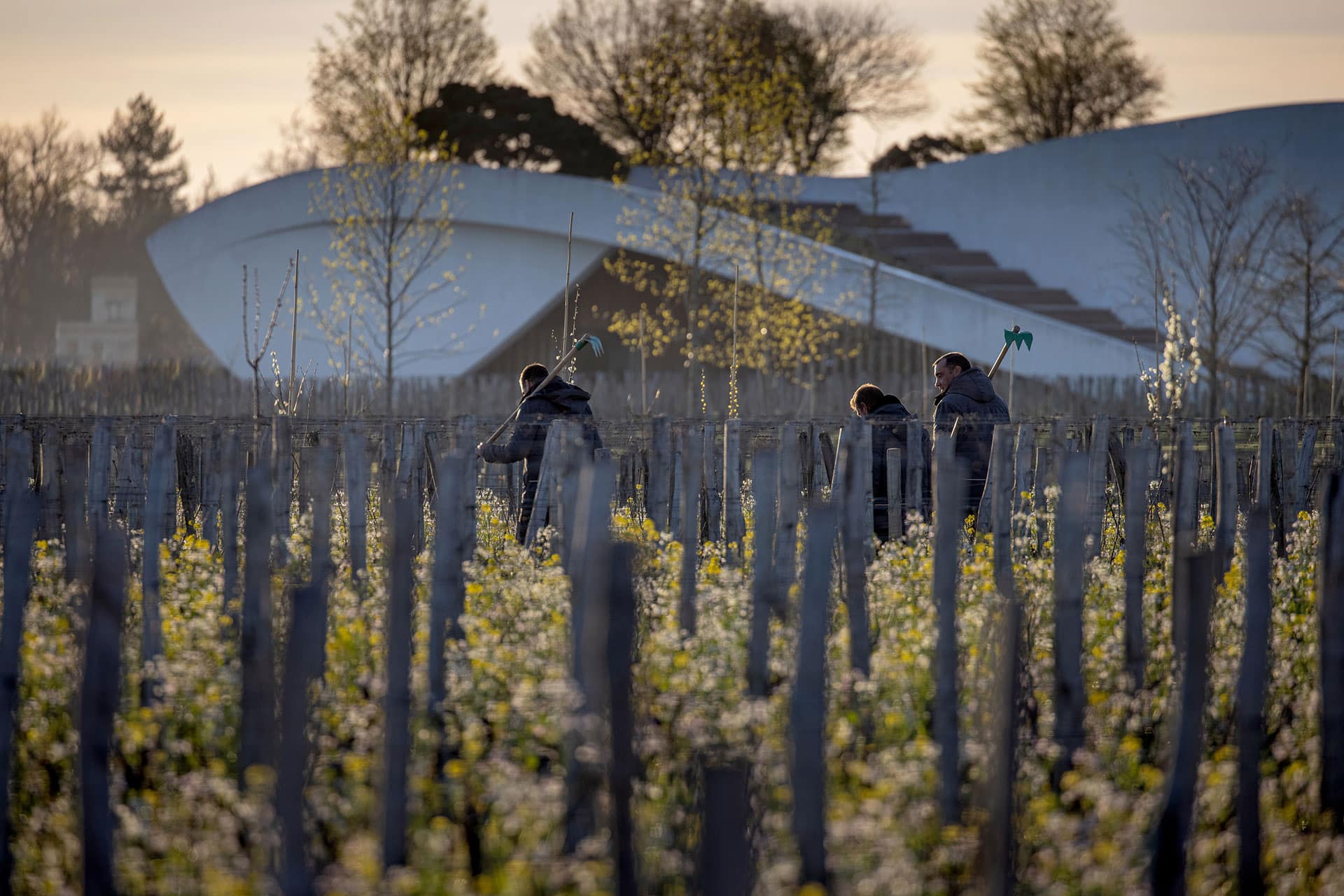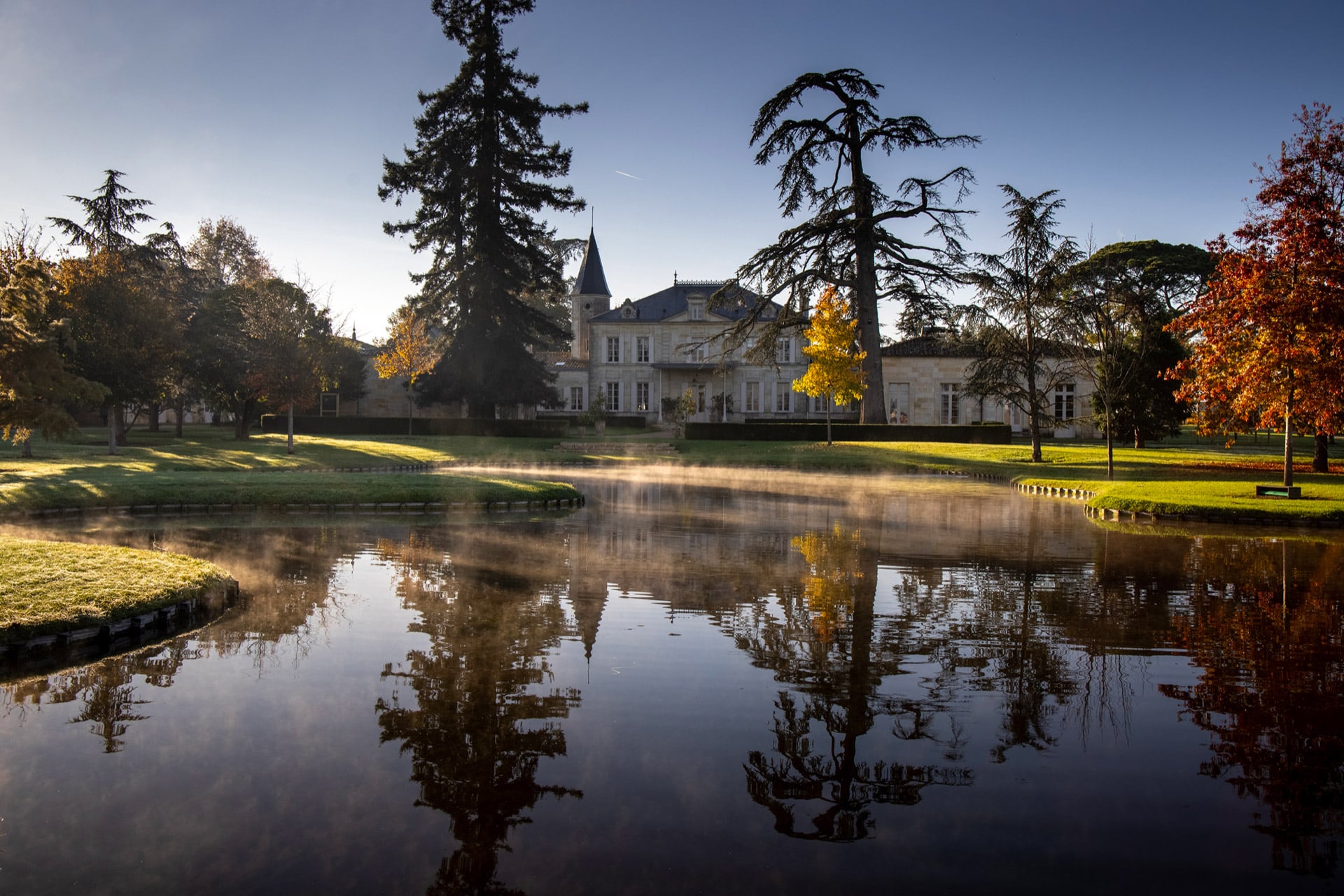
Our land is rooted in six centuries of history.
For six centuries, winemakers have been working the land at Cheval Blanc; land which was planted with vines over 2,000 years ago. The current configuration of the domain dates back to the middle of the 14th century. During the past 150 years, the reins at Cheval Blanc have changed hands only once. This has enabled long term stability in terms of technical management and has safeguarded the integrity of its vineyards.
Although the exact period and placement of the first vines to be cultivated in the Bordeaux region is unclear, we do know that in the Roman era opulent wine-growing estates were being built around Saint Emilion, such as that constructed by Ausone, poet, winegrower and consul under the 4th century Roman Empire. These vineyards were developed over the centuries through to the Middle Ages when they expanded intensively. In the 12th century, under the English occupation, the port at Libourne was build and developed opening the way for maritime expeditions which helped to spread the renown of these wines throughout Europe. At that time, Saint-Emilion was producing ‘honourable’ wines. Already considered to be of rare quality and ageing potential, they were served to the most prestigious personalities and monarchs.
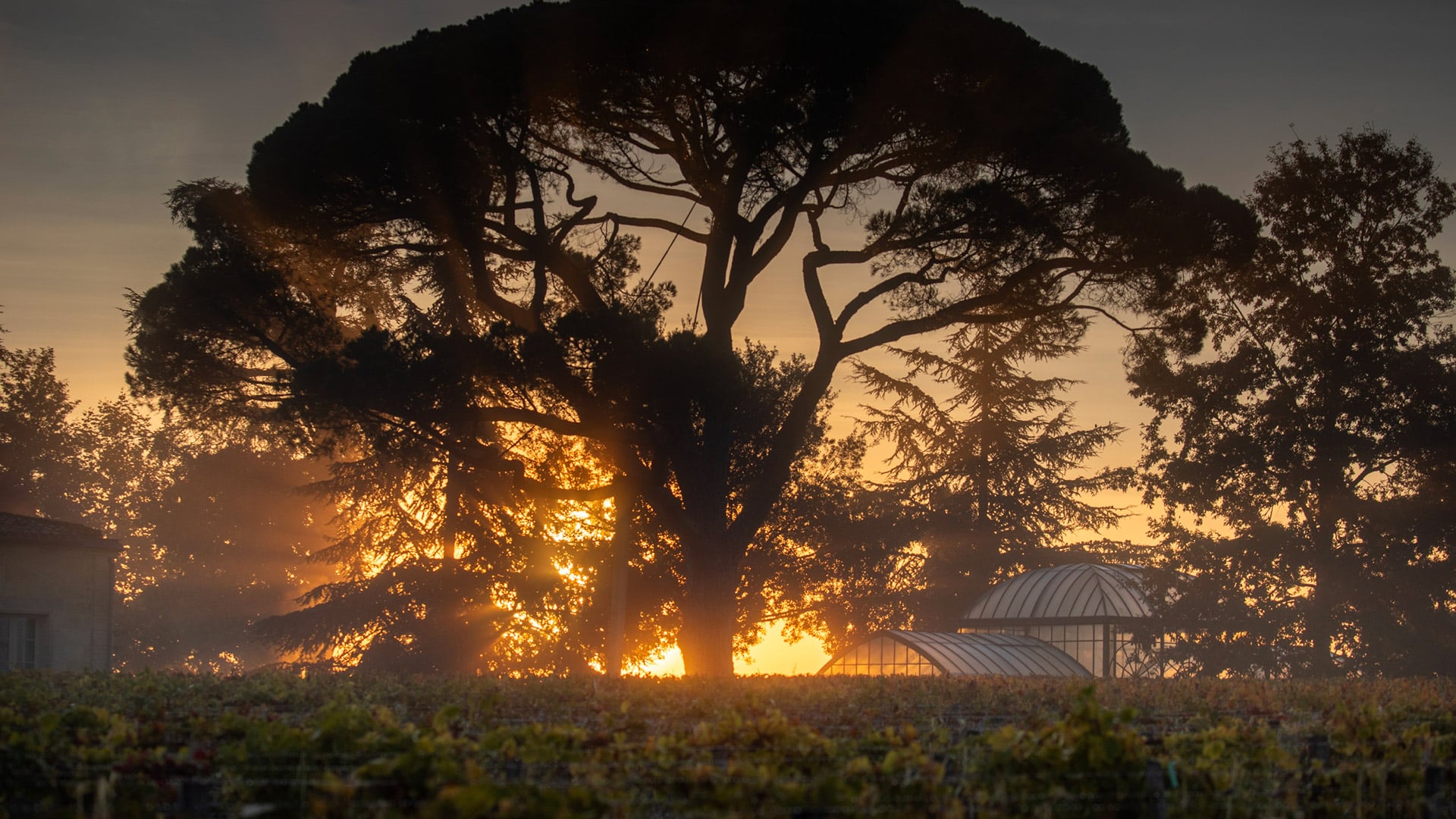
Nevertheless, Cheval Blanc was endowed with a unique terroir with both gravel and clay soils cohabiting in more or less equal proportions. A pure accident, but fundamental to its history.
Poetically described as the ‘hill of a thousand châteaux’, the history of Saint-Emilion is populated with visionary wine lovers and passionate specialists, all of whom participated in forging the age-old renown of these vineyards.
Situated at the confluence of the Isle and Dordogne, the territory of the Appelation d’Origine Controlée Saint-Emilion lies to the east of Libourne. It surrounds the town of Saint-Emilion which sits on a limestone plateau. Château Cheval Blanc has an unusual position within the appellation: most of the other well-known Saint-Emilion growths are situated on limestone formations from the tertiary era whilst Cheval Blanc sits on quaternary alluvium from the Isle. It shares the same non-calcareous soils of varied texture with most of the prestigious growths of Pomerol.
Ancient texts from as far back as the 15th century bear witness to the cultivation of vines at Cheval Blanc. Archives from 1546 reveal that the owner of the land passed on the vineyards to a tenant farmer and a contract from 1587 stipulates that the tenant farmer ‘spends the night to keep watch over the harvested fruit from these vines’. A century later, a smallholding called ‘Au Cheval-Blanc’ was sold by Bertrand de Gombaud for the princely sum of 1,400 Pounds. At the time of the dawn of the French Revolution, two winegrowers resided full-time at Cheval Blanc. This was exceptional and pays testament to the quality of the terroir.
The renewal
The prestigious career of Cheval Blanc began in 1832 when the heart of the domain was purchased by Jean-Jacques Ducasse, president of the Tribunal Court of Libourne. Over the next 20 years, successive acquisition of plots of land from Château Figeac came to form Cheval Blanc’s 39-hectare domain which is practically identical today.
The marriage of the owner’s daughter Henriette Ducasse and a wine merchant from Libourne, Jean Laussac-Fourcaud marked a new chapter in Cheval Blanc’s destiny and defined its unique identity. When Henriette inherited Cheval Blanc her husband undertook a spectacular modernisation of the domain. Being the first person to understand the importance of hydric stress to produce good wine, he devised an efficient network of covered walled drains on specific plots.
The most impactful of the new owner’s projects however was in the vineyard. Detecting that Cheval Blanc’s terroir was exceptional and following extraordinary intuition, in mid-1860, Jean Laussac-Fourcaud replanted part of the property. He opted for atypical varieties with half Merlot, the king variety of the Right Bank and half Cabernet Franc. These unusual plantings were completed in 1871. From 1852 the previous ‘Figeac wines’ were sold for the first time under the Cheval Blanc name. This marked the beginning of its prestigious career.
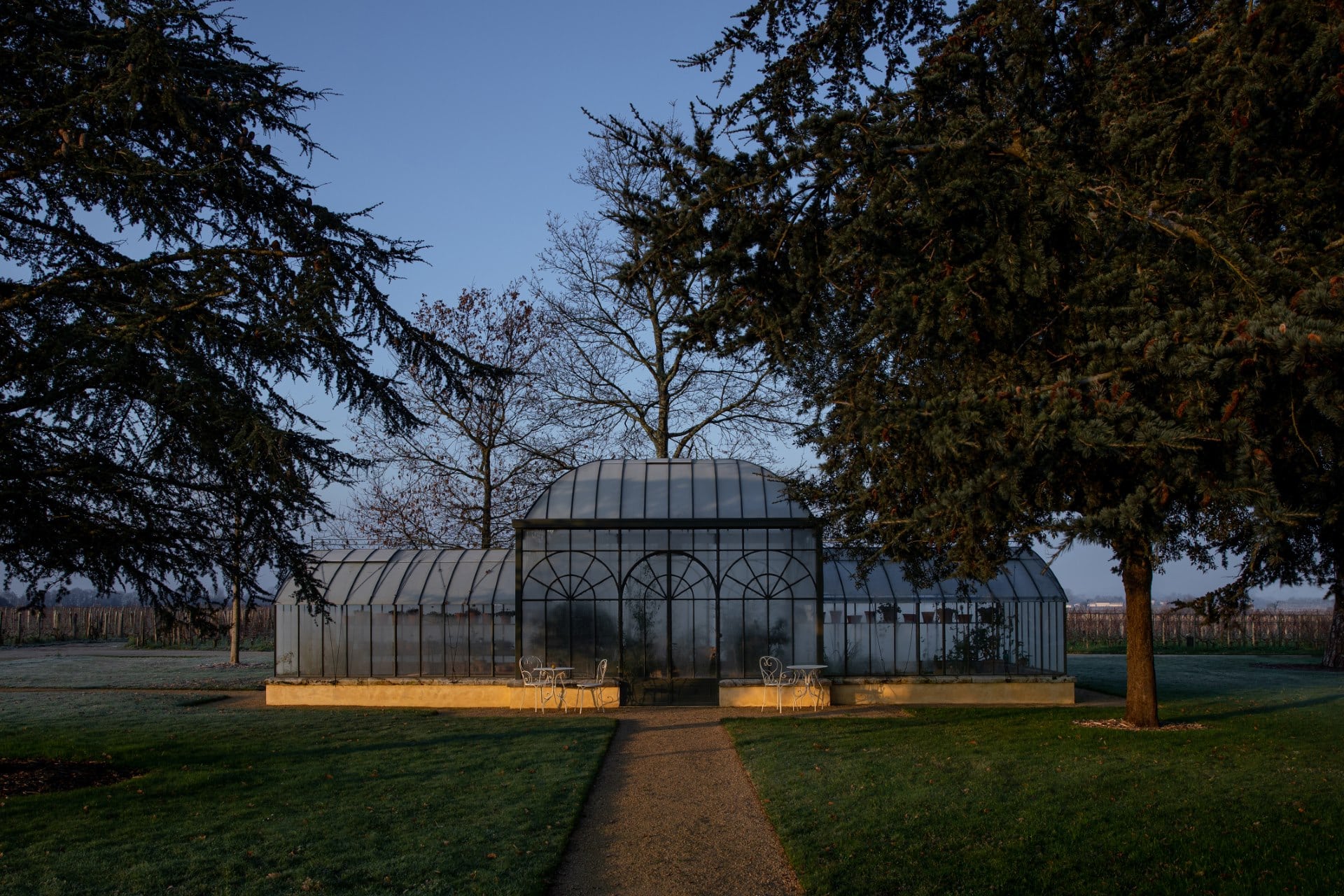
Notoriety
For over 30 years, Jean Laussac-Fourcaud dedicated himself to a single objective: to take his wine to the summit of Saint-Emilion winemaking and to establish its nascent notoriety. In 1862, Cheval Blanc won its first medal at the Universal Exhibition of London. This first bronze medal still adorns Cheval Blanc’s labels today. In 1878, le Château won its first gold medal at the Universal Exhibition of Paris. This medal is also still featured on the wine label. In 1886, Cheval Blanc won its second gold medal at the Universal Exhibition of Anvers.
The construction of the Château at the heart of the domain was emblematic of this approach. The path to international recognition was now wide open. The 1880’s saw the realisation of Cheval Blanc’s wildest dreams. From the second half of the 19th century, the wine was considered by wine merchants and collectors alike as an equal amongst the first growths of the Medoc and as one of the most dependable wines in the world. It brushed shoulders with Margaux, Latour, Lafite and Haut-Brion at the auctions in Paris and London. Its notoriety saw it served at the most prestigious official meals. It became a must-have wine at presidential receptions and dinners.
When Jean Laussac-Fourcaud died in 1888 his widow inherited the domain. She passed it down to her son Albert who switched around the family name. Albert Fourcaud-Laussac carried on the work of his father and installed twelve wooden vats which were used up until 1966. He invested significant financial and human resources in the unique treasure he inherited: the vineyards which were hand-selected within the domain. Albert’s sons, Jacques and Joseph continued in their father and grandfather’s footsteps in their pursuit of excellence. The same cellarmaster worked every day for 44 years at Cheval Blanc: Gaston Vaissière dedicated his talent, energy and passion to a terroir which he considered to be ‘magical’.
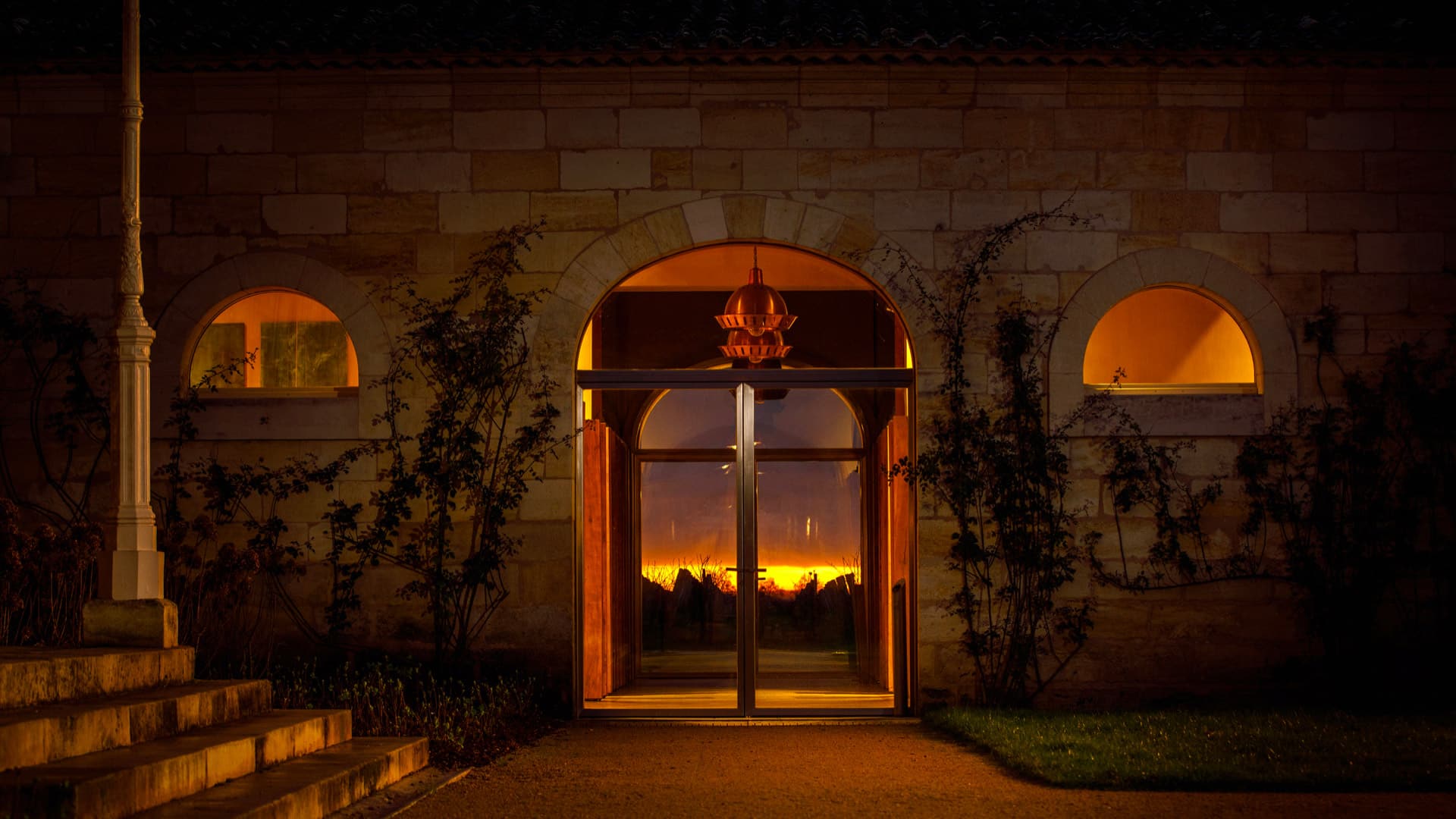
The baton was passed in autumn 1998. Two old friends and collectors of fine wine, Bernard Arnault and Baron Albert Frère joined forces to acquire this jewel of Saint-Emilion. They injected a new vitality whilst carefully respecting its history and patrimony and placed total confidence in the team already working there.
A dedication
When the first classification of Saint-Emilion wines came out in 1954, Cheval Blanc obtained the ultimate recognition; Premier Grand Cru Classé A. Every decade since, this classification has been reconfirmed: excellence has been upheld from classification to classification. Cheval Blanc penetrated the prestigious and coveted ‘Club of Nine’ which brings together the top of the top Bordeaux properties.
The quest for perfect quality is ingrained permanently in our approach which combines the cultivation of detail with the search for precision. This dynamic quest is firmly embedded in Cheval Blanc’s future. Completed in June 2021, the winery designed by Christian de Portzamparc as an extension of the Château is a testament to this. In keeping with the wishes of Baron Albert Frère and Bernard Arnault, this building prefigures the future whilst remaining totally integrated in the historic surroundings classified as a World Heritage Site by UNESCO.
The last few decades have also followed an equally dynamic trajectory with the birth of a Bordeaux fine white wine: Petit Cheval Blanc. This adventure began in 2006 when Château La Tour du Pin, a grand cru planted with Merlot and Cabernet Franc, was purchased. The first experiments with grafting Sauvignon Blanc took place from 2008 in order to identify the soil’s potential for growing grapes for white wine. A few years later, Semillon was identified in a vineyard already in production and as a result, in September 2016, Château Cheval Blanc presented with enormous pride Petit Cheval blanc 2014.
The privileged setting of La Tour du Pin saw the rapid creation of a nature sanctuary. Very quickly, this vision spread, developed and gained momentum: in 2021 Château Cheval Blanc published a manifesto detailing its commitment to agroforestry. Since then, the vines share the domain with animals, vegetable gardens, orchards, flower gardens and bee hives. This sustainable agriculture is rooted in unploughed living soils with vegetative ground cover. Polyculture and biodiversity have returned to the heart of the domain.
In July 2021, Château Cheval Blanc took the difficult decision to remove itself from the classification Premier Grand Cru Classé A. After much thought and deliberation, the decision was based around the realisation that the parameters for evaluation and criteria for the classification are no longer aligned to the domain’s fundamental principles. Terroir, wine and our history must lie, today and tomorrow, at the very heart of the cares and preoccupations of Château Cheval Blanc.
